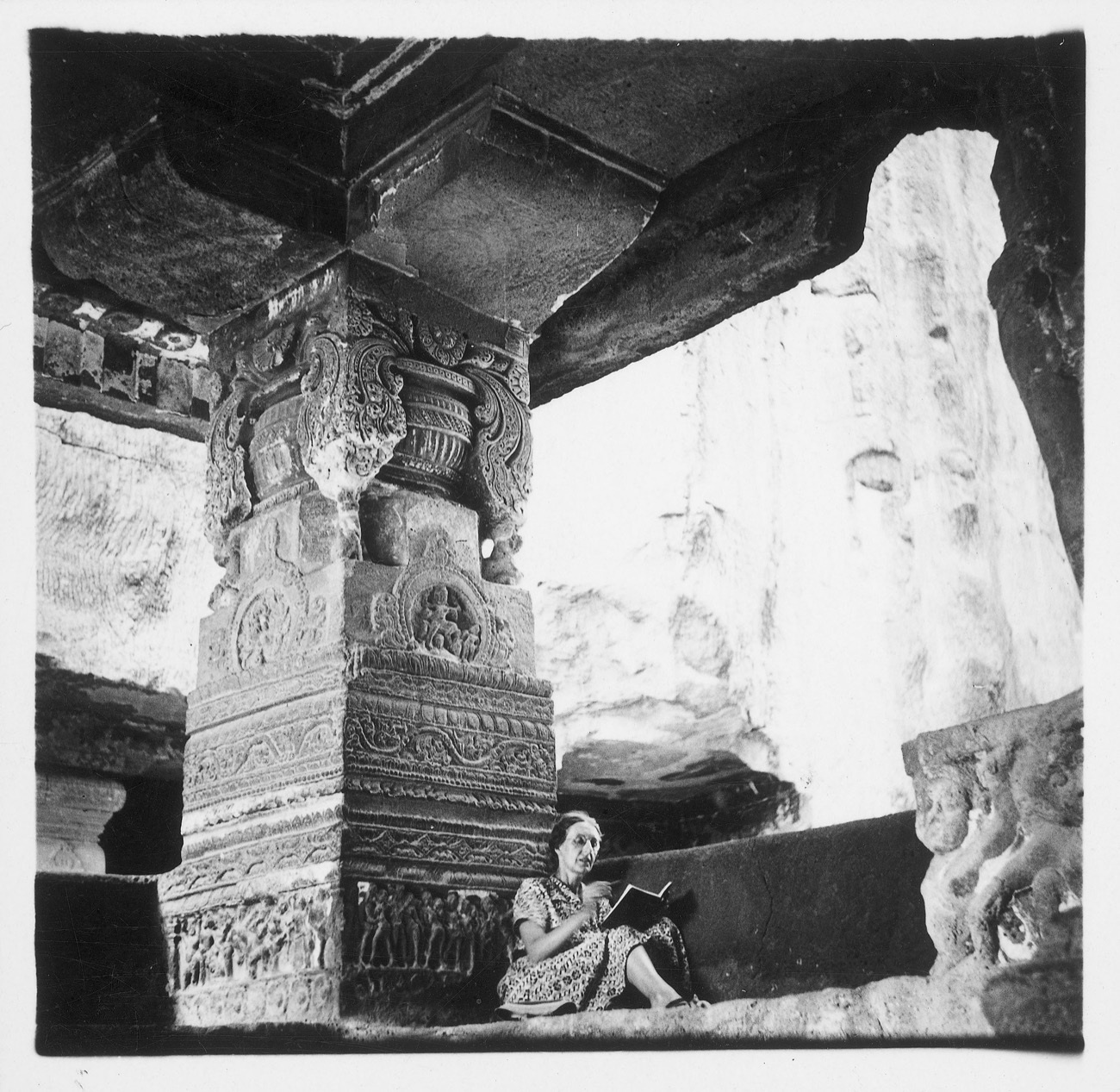Alice Boner:
Documenting Dance in India
Documenting Dance in India
A Glimpse of Alice Boner’s Archive
In October 2016, the National Museum, New Delhi, hosted an exhibition titled Alice from Switzerland. The exhibition was dedicated to the works of Alice Boner (1889-1981), a Swiss sculptor, painter and, later, art historian, who eventually settled in Varanasi. Boner had a deep interest in Indian arts and dance and one of her subjects was the pioneering dancer Uday Shankar, whom she photographed on different occasions. Below is a glimpse into her relationship with dance in India. Her full body of work, including more images on dance, can be found at Museum Rietberg.
Sketch of Uday Shankar dancing
Zurich, Switzerland, 1926
Drawing in red chalk on paper, 26 x 18.4 cm
Museum Rietberg Zurich, AB 774
Legacy Alice Boner

Alice Boner in Ellora
Ellora, India, 1938
Gelatine silver print, baryt, 5.6 x 5.8 cm
Museum Rietberg Zurich, AB 774
Legacy Alice Boner

Uday Shankar dancing
Zurich, Switzerland, 1926
Cellulosenitrat, bw negative, 10.4 x 7.3 cm
Museum Rietberg Zurich, AB 774
Legacy Alice Boner

Kathakali dancer, man with make up
India / Malabar, 1935
Cellulosenitrat, bw negative, 3x4 cm
Museum Rietberg Zurich, AB 774
Legacy Alice Boner

Uday Shankar in front of the Relief Mahisasuramardini
India, Mahabalipuram (Mamallapuram) 1930
Cellulosenitrat, bw negative, 4.7 x 7.4 cm
Museum Rietberg Zurich, AB 774
Legacy Alice Boner






